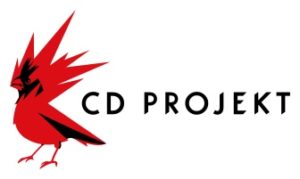Computer game – a treausre trove of IP rights. How to protect them? Part I
The Polish computer games market is currently one of the fastest-growing in Europe. Revenues generated by companies from the gaming sector in Poland in 2020 amounted to EUR 969 million!
It is known for a long time that where big money is – there are even bigger disputes. Entrepreneurs from the gamedev market are undoubtedly exposed to unfair actions by their competitors. How to defend against them? The answer is to protect everything you can before it becomes a dispute. Everything, which is what?
The game as a whole is protected under the Polish Copyright Act as a computer program act (Art. 1 paragraph 2 point 1). This protection is granted „automatically” and lasts 70 years from the death of the creator. However, it is possible (and even necessary!) to provide computer games with much more protection.
Let’s start from the beginning – the consumer buys the game in a package that is likely designed specifically for them. The packaging has the manufacturer’s logo and the name of the game. These are the first three things that should be protected, i.e. registered as trademarks (or industrial design – in the case of packaging). Let’s take a look at how the largest Polish game producer – CD Projekt Red – registers trademarks:
 |
 |
 |
| EUTM 014722912 | EUTM 017912301 | EUTM 014374094 |
| WIEDŹMIN | YENNEFER |  |
| EUTM 018202034 | EUTM 017971909 | EUTM 018296846 |
Interestingly, the word-graphic designation Cyberpunk 2077 was submitted for registration 2 years before the game’s premiere. This is an excellent move because in the event of refusal to register the trademark, the company may change the designation to one that is suitable for registration before making financial outlays for the marketing and production of a game marked with an unprotected trademark. A well-chosen registration strategy is a basis, in this matter, it may be necessary to consult an intellectual property law specialist. You can read about why it is worth registering trademarks and other intangible goods on our Facebook – Face IP by ZG legal.
Let’s go further – take the game out of the box and start having fun. What do you see? Probably the manufacturer’s logo, the name of the game, or you may hear something else. This music will most likely accompany you in the next stages of delving into the virtual world. The manufacturer does not have to do anything to protect it – such protection is granted by the Polish Copyright Act. However, you can register a repeated short fragment as a sound trademark. The American company Edgar Rice Burroughs Inc. (founded by the writer – author of Tarzan) decided to take such a step, which registered Tarzan’s scream as a trademark (EUTM 005090055), among other things, for computer games.
So let’s play! Every character you „are” or you meet, every building you see, and even the entire virtual landscape can be a work protected under the copyright. Characters can also be trademarks. So let’s take a look at how game characters are registered:
 |
 |
 |
 |
 |
| IR.1111359ATM proprietor: OUT FIT 7 | 2014051572 (Malezja)TM proprietor: OUT FIT 7 | EUTM 015298541TM proprietor: Nintendo | EUTM 015298573TM proprietor: Nintendo | EUTM 005889142TM proprietor: Nintendo |
Looking more broadly, we can see that the plot of the game – some kind of a script – is also a work, specifically a literary work. In this case, the only way of protection is the one provided for in the law. It must be remembered that if we do not use this protection, i.e. react to violations, it loses its significance. Monitoring and reacting are essential to protecting your rights.
Computer games are a deep well with hundreds of rights on intangible goods that can be written about endlessly, so we decided to divide our considerations into several parts. In the next installment, we will present ways to protect the game „from the inside” – for example, its code. We will discuss the issue of patents from the world of games as well.
See more:
SUMMER IP MEETINGS FOR LAW STUDENTS IN OUR GARDEN
Discover the Fascinating World of Intellectual Property Rights with Żuraw i Wspólnicy sp. k.! Are you a law student interested in intellectual property law? Do you want to learn about trademarks and their protection principles? Are you eager to explore...
CJEU Ruling Reinforces: Mere Knowledge of Existing Trade Marks Isn’t Enough to Prove Bad Faith Applications
In its judgment of 15 May 2024, in Case T-181/23, the CJEU dismissed the appeal against the decision of the EUIPO Board of Appeal and thus, the Court once again confirmed that the applicant’s mere knowledge of a third party's earlier trade mark shall not be sufficient...
A Czech court rules on copyright to a work generated by AI
Artificial intelligence is becoming more and more prominent in the sector of music, literature and, as a matter of fact, in most fields that require a creative approach to any task or issue so far reserved exclusively for humans. It was therefore only a matter of time...
